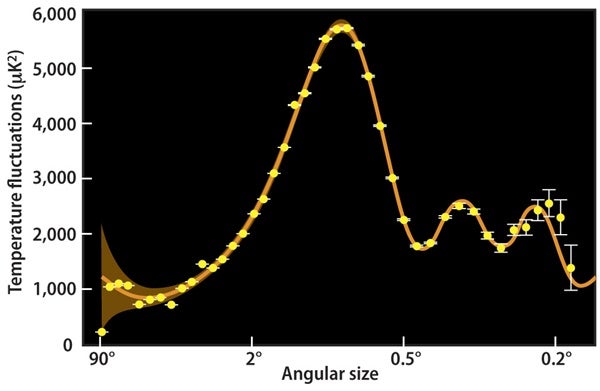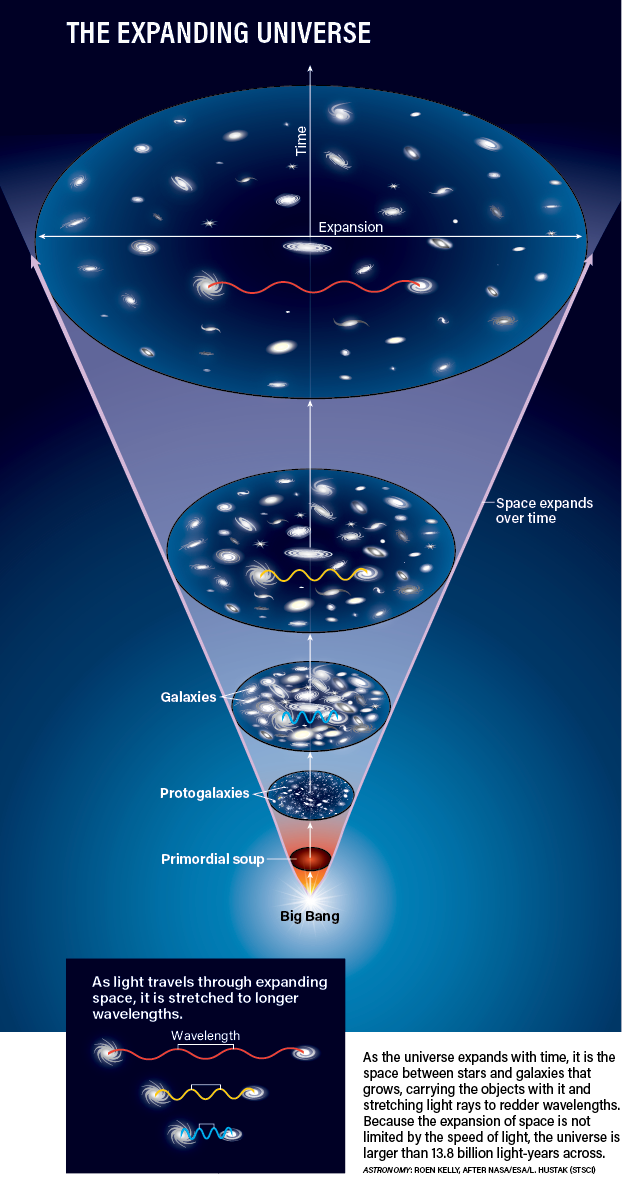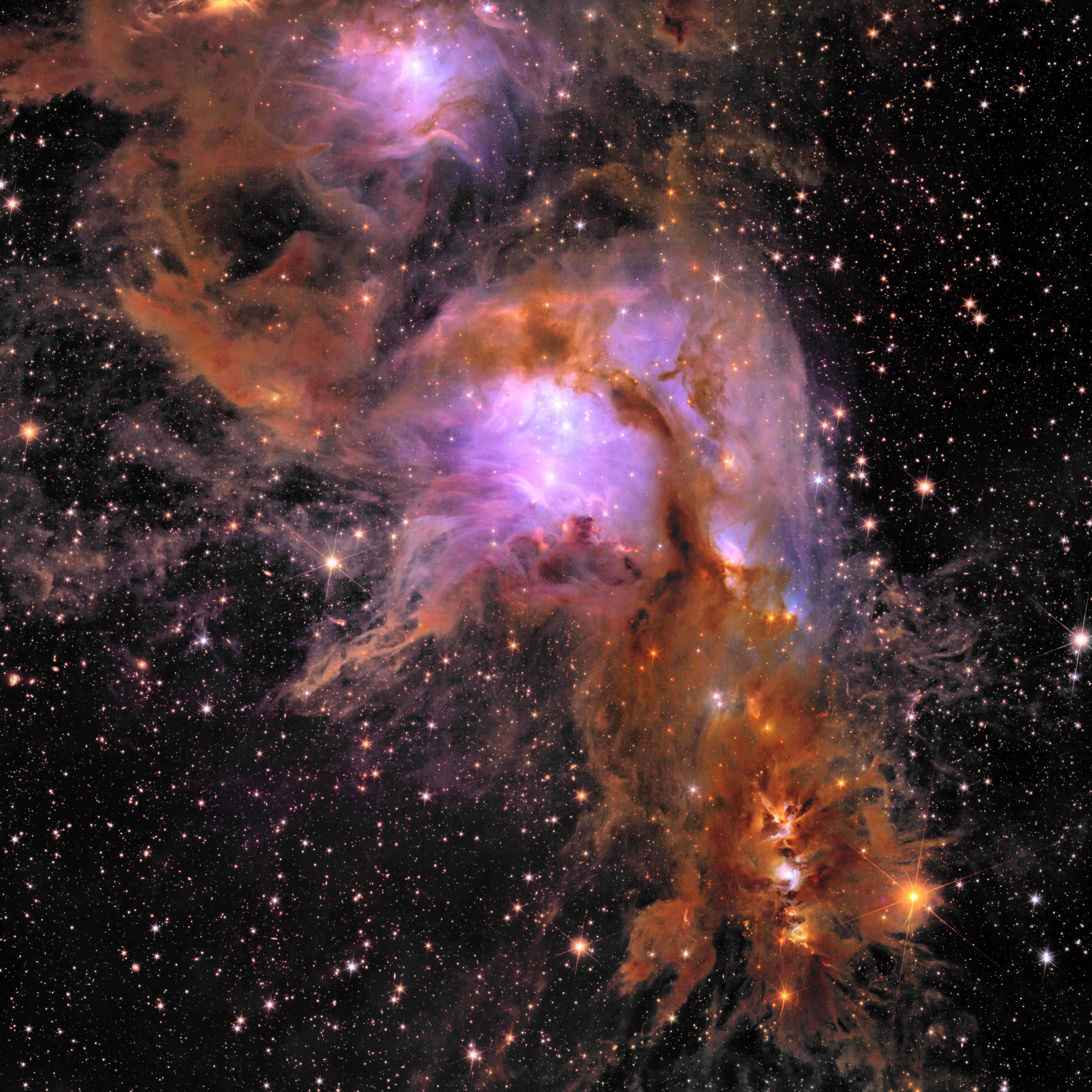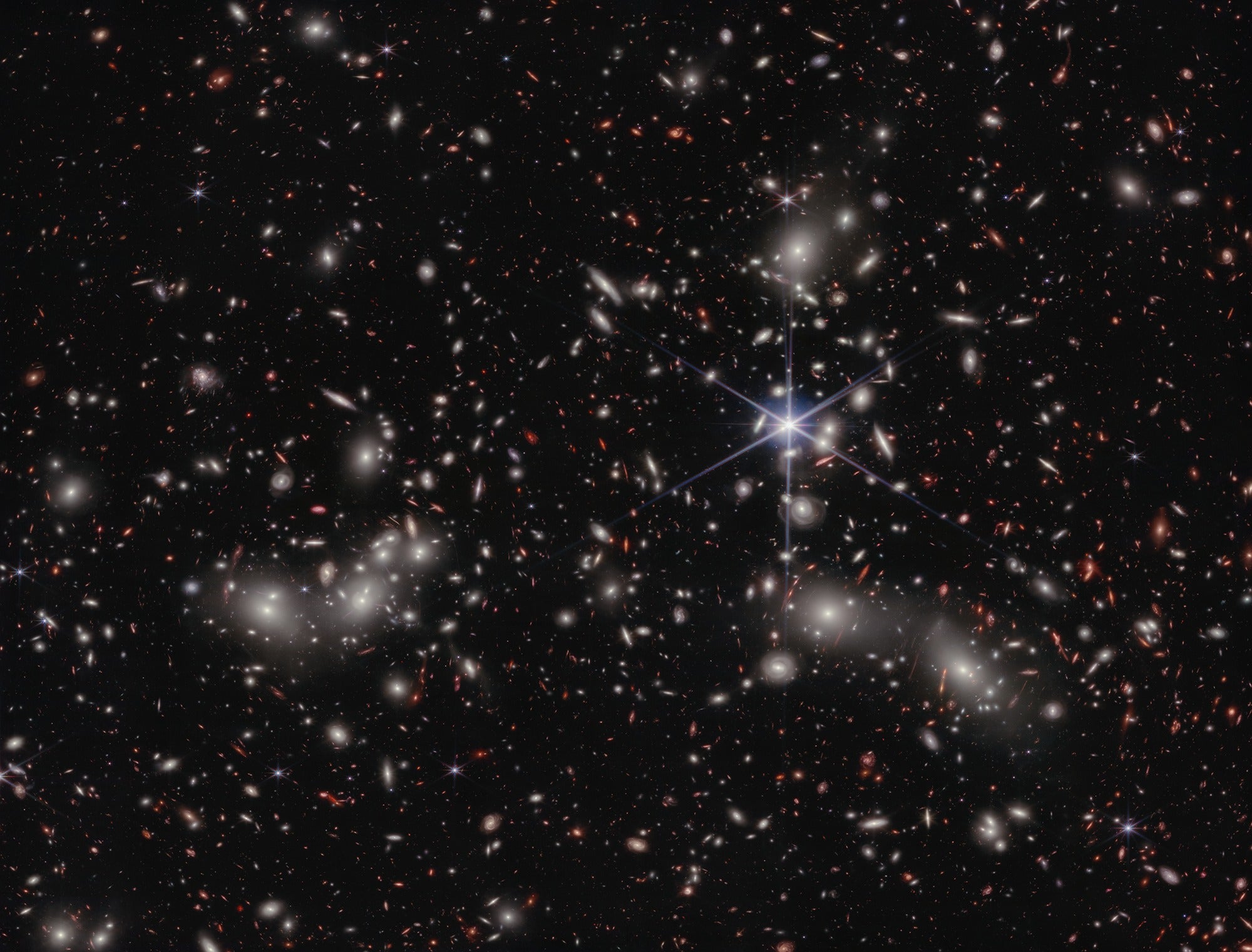
The fluctuations of the cosmic microwave background (CMB) are the imprint of structure in the early universe. The angular sizes (shown in the plot on the right) of the fluctuations tell cosmologists about the amount of dark matter, dark energy, and ordinary matter in the universe.
CMB map: NASA/WMAP Science Team; Data plot: Astronomy: Roen Kelly after NASA/WMAP Science Team
The data plot shows the power in these temperature fluctuations as a function of angular separation of points in the sky. The shape of this graph tells a lot about the amount of dark matter, dark energy, and ordinary matter in the universe.
In a simplified picture, dark matter changes the height of the first peak relative to the plateau at the largest scales. Dark energy changes angular separation corresponding to the peaks. Ordinary matter changes the relative heights between odd and even peaks.









